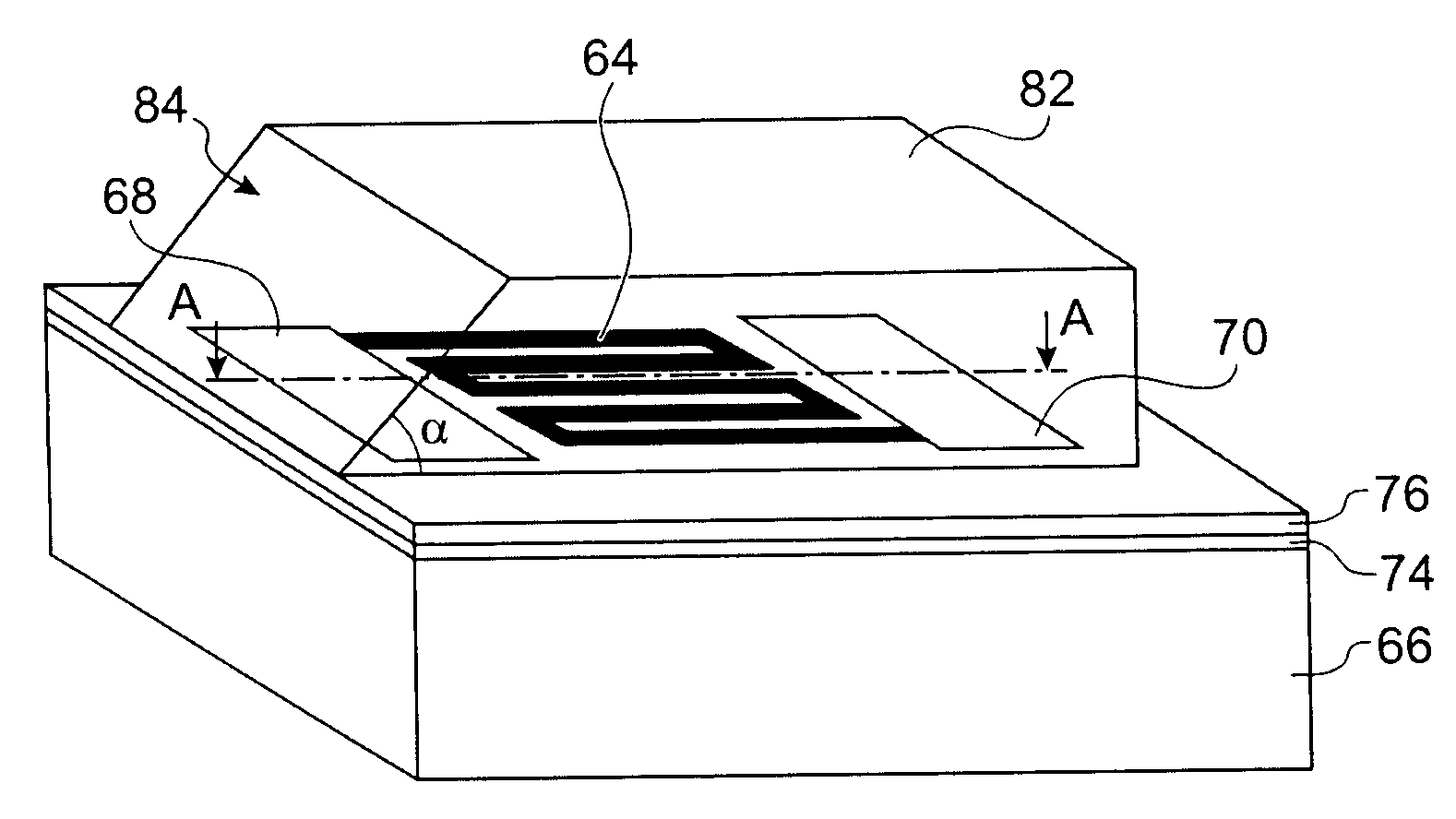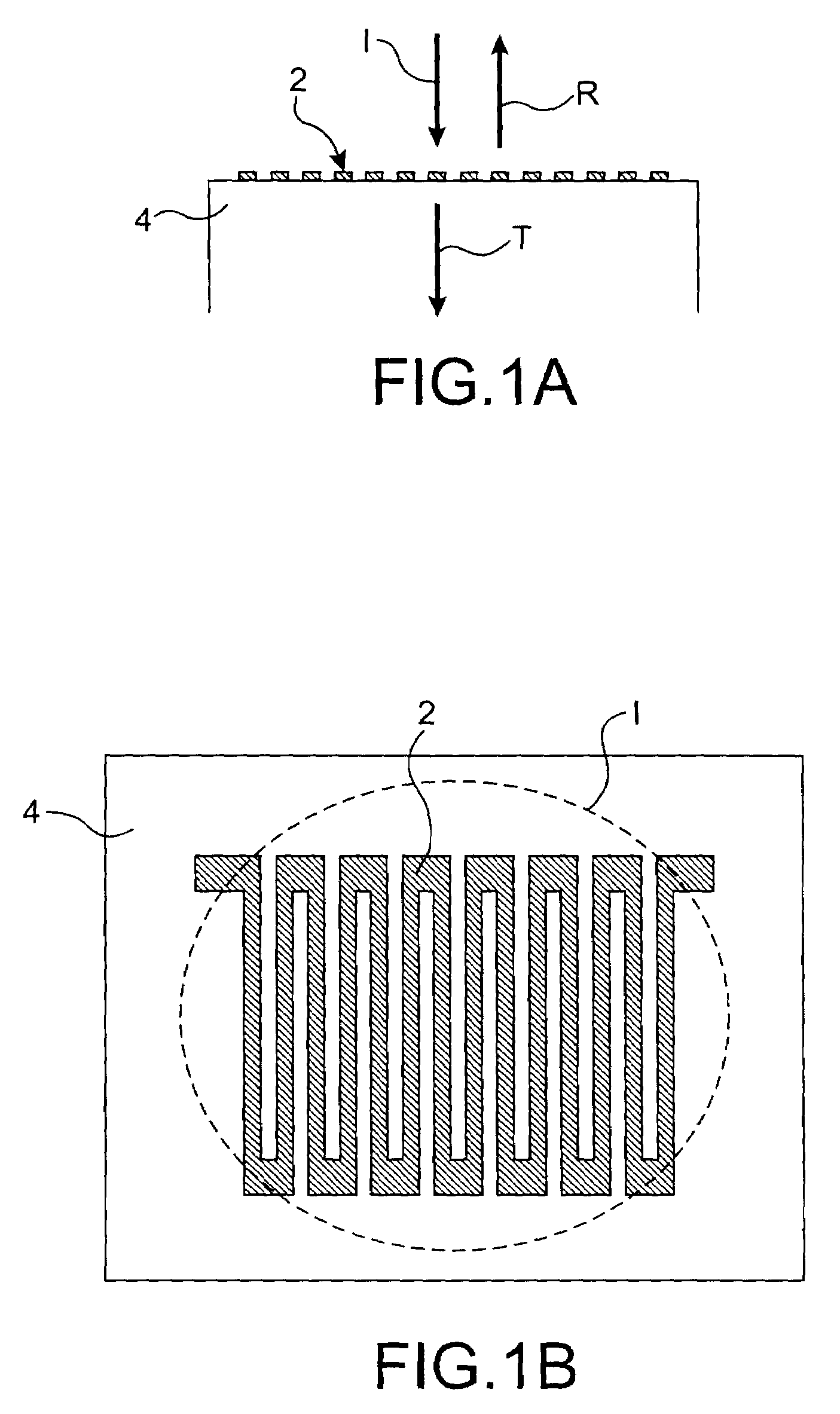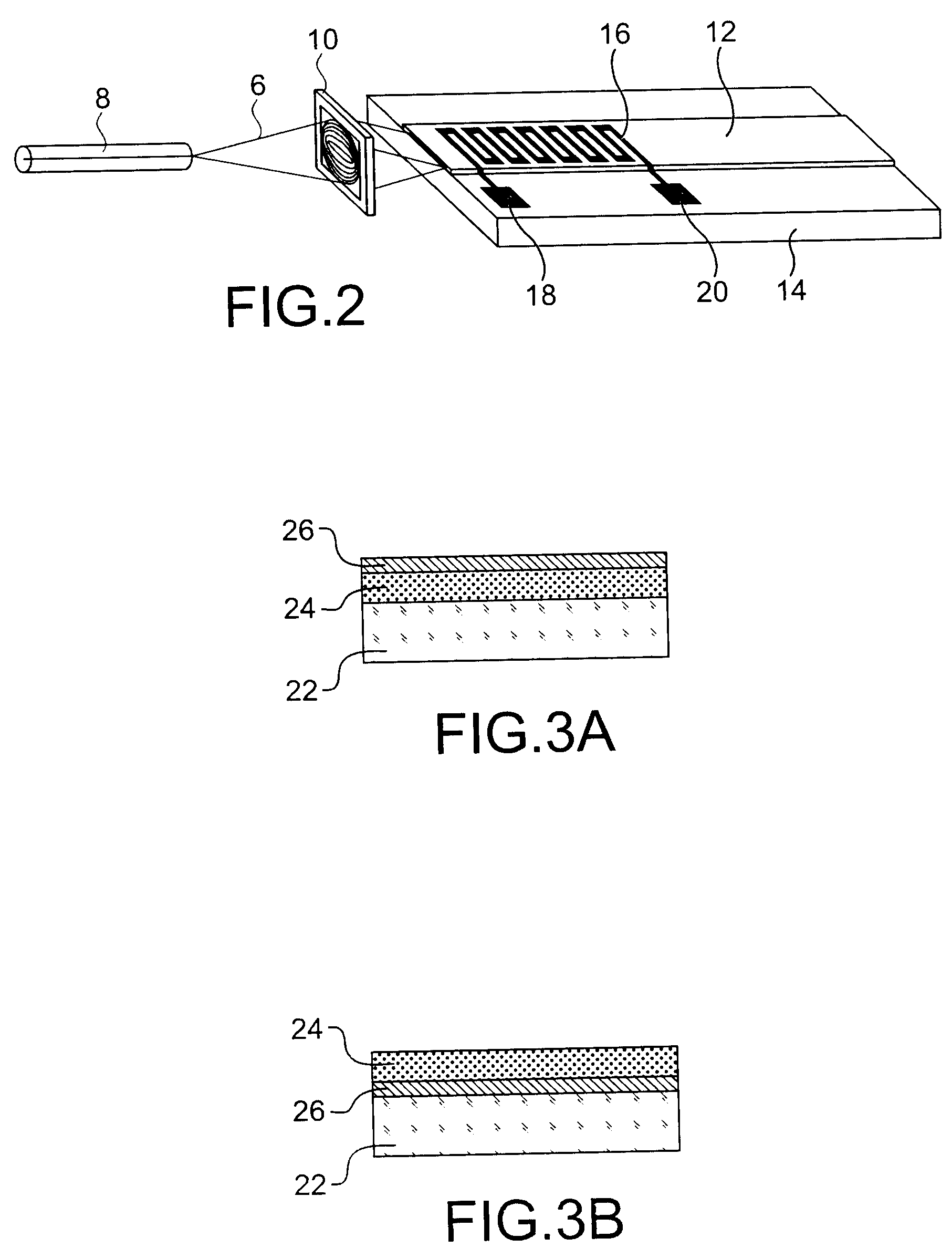High time-resolution ultrasensitive optical sensor using a planar waveguide leakage mode, and methods for making same
a planar waveguide leakage and ultra-sensitive technology, applied in the field of high-time-resolution ultra-sensitive optical detectors, can solve the problems of limited performance, hardly exceeding this value, and technological limitations
- Summary
- Abstract
- Description
- Claims
- Application Information
AI Technical Summary
Benefits of technology
Problems solved by technology
Method used
Image
Examples
Embodiment Construction
[0034]The present invention aims to resolve the problem of the design of a high time-resolution ultrasensitive optical detector, in particular a SSPD type detector, said detector having a detection efficiency clearly superior to those that are obtained in the prior art, this detector moreover being able to be produced by existing technological means.
[0035]In a precise manner, the subject of the present invention is an optical detector, intended to detect at least one photon, this detector comprising a stacking with a dielectric substrate having a refractive index nS and, on this substrate:[0036]a detection element, provided to generate an electrical signal from the energy of the photon(s) received, and[0037]a first dielectric layer having a refractive index nH,
[0038]this detector being characterised in that it further comprises:[0039]a second dielectric layer, placed on the first dielectric layer and having a refractive index nB, nH being greater than nB and nS, the detection elemen...
PUM
 Login to View More
Login to View More Abstract
Description
Claims
Application Information
 Login to View More
Login to View More - R&D
- Intellectual Property
- Life Sciences
- Materials
- Tech Scout
- Unparalleled Data Quality
- Higher Quality Content
- 60% Fewer Hallucinations
Browse by: Latest US Patents, China's latest patents, Technical Efficacy Thesaurus, Application Domain, Technology Topic, Popular Technical Reports.
© 2025 PatSnap. All rights reserved.Legal|Privacy policy|Modern Slavery Act Transparency Statement|Sitemap|About US| Contact US: help@patsnap.com



